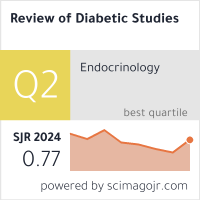Mapping Of Actors And Objectives In The Surgical Management Of Diabetic Foot: Application Of The Mactor Method
DOI:
https://doi.org/10.1900/qeeka679Keywords:
diabetes, amputations, infections, interprofessional coordination, patients.Abstract
Background: Diabetic foot represents one of the most serious complications of diabetes mellitus and is the leading cause of non-traumatic amputations worldwide. Its surgical management requires a multidimensional approach, integrating clinical, institutional, and social actors with varying degrees of influence and power. However, the literature shows that the lack of interprofessional coordination and clear policies limits clinical outcomes and increases costs for the healthcare system.
Objective: To analyze the dynamics of power, influence, and convergence of objectives in the surgical management of diabetic foot by using the MACTOR method to discover strategic actors, priorities, and gaps in the governance of the system.
Methods: A qualitative exploratory study was conducted using the MACTOR (Matrix of Actors and Objectives) method. Key actors and strategic objectives were identified and assessed through a literature review and expert consultation. Matrices of direct influence, actor positions relative to objectives, and net convergences and distances were constructed, allowing for the mapping of patterns of power, cooperation, and conflict.
Results: Hospital managers and policy-makers/insurers were classified as dominant actors, while surgeons were classified as link actors. Patients/caregivers and specialized nursing staff showed the highest levels of convergence, reflecting their central role in comprehensive care. The highest priority objectives were standardization of clinical protocols, reduction of morbidity and mortality, and improvement of quality of life, while perioperative metabolic control and efficient resource utilization showed the lowest capacity for action.
Conclusions: The MACTOR method proved to be a very useful tool for clearly mapping out governance in the surgical management of diabetic foot. The results highlight the importance of strengthening interdisciplinary integration, promoting a patient-centered approach, and guiding policies toward more equitable, efficient, and sustainable care.
Downloads
Published
Issue
Section
License

This work is licensed under a Creative Commons Attribution-ShareAlike 4.0 International License.


